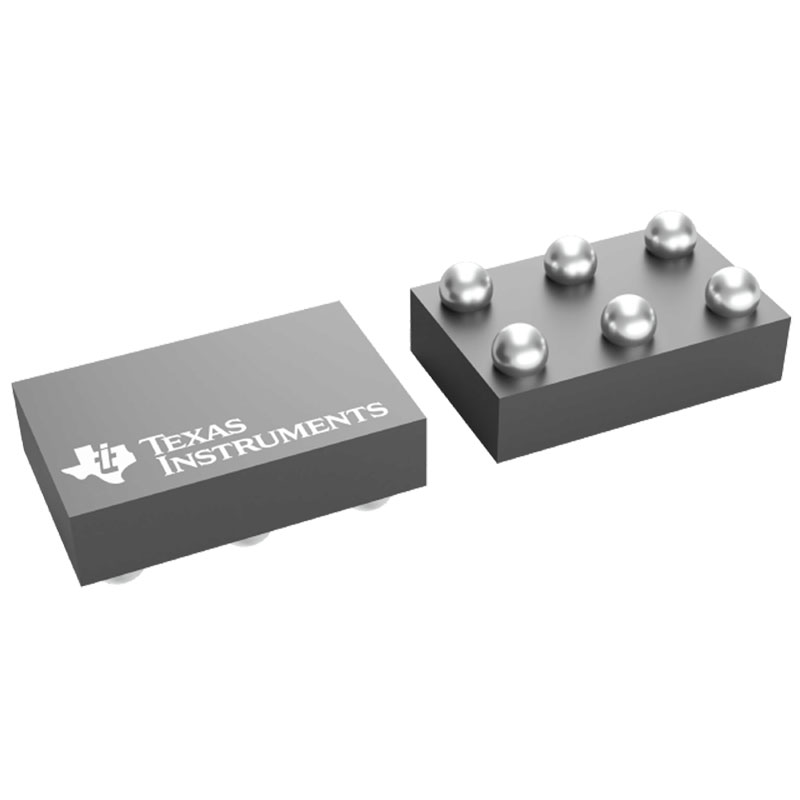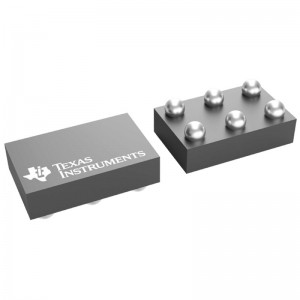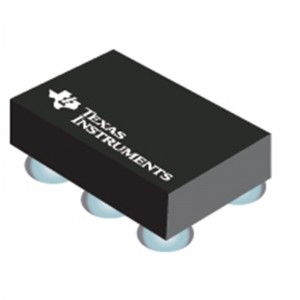
Products
TPS22924CYZPR 3.6-V, 2-A
Features for the TPS22924C
Integrated Single Load Switch
Input Voltage: 0.75 V to 3.6 V
On-Resistance
- RON = 18.3 mΩ at VIN = 3.6 V
- RON = 19.6 mΩ at VIN = 1.8 V
- RON = 19.4 mΩ at VIN = 1.2 V
- RON = 22.7 mΩ at VIN = 0.75 V
Small CSP-6 package
0.9 mm × 1.4 mm, 0.5-mm Pitch
2 A Maximum Continuous Switch Current
Low Shutdown Current
Low Threshold Control Input
Controlled Slew Rate to Avoid Inrush Currents
Quick Output Discharge Transistor
ESD Performance Tested Per JESD 22
- 5000-V Human-Body Model
(A114-B, Class II) - 1000-V Charged-Device Model (C101)
Description for the TPS22924C
The TPS22924x is a small, low RON load switch with controlled turn on. The device contains a N-channel MOSFET that can operate over an input voltage range of 0.75 V to 3.6 V. An integrated charge pump biases the NMOS switch to achieve a minimum switch ON resistance. The switch is controlled by an on/off input (ON), which is capable of interfacing directly with low-voltage control signals.
A 1250 Ω on-chip load resistor is added for output quick discharge when the switch is turned off. The rise time of the device is internally controlled to avoid inrush current. The TPS22924B features a rise time of 100 µs at VIN = 3.6 V while the TPS22924C has a rise time of 800 µs at VIN = 3.6 V.
The TPS22924x is available in an ultra-small space-saving 6-pin CSP package and is characterized for operation over the free-air temperature range of –40ºC to 85ºC.
1. Who are the staff in your R & D department? What are your qualifications?
-R & D Director: formulate the company’s long-term R & D plan and grasp the direction of research and development; Guide and supervise r&d department to implement company r&d strategy and annual R&D plan; Control the progress of product development and adjust the plan; Set up excellent product research and development team, audit and training related technical personnel.
R & D Manager: make new product R & D plan and demonstrate the feasibility of the plan; Supervise and manage the progress and quality of r&d work; Research new product development and propose effective solutions according to customer requirements in different fields
R&d staff: collect and sort out key data; Computer programming; Conducting experiments, tests and analyses; Prepare materials and equipment for experiments, tests and analyses; Record measurement data, make calculations and prepare charts; Conduct statistical surveys
2. What is your product research and development idea?
- Product conception and selection product concept and evaluation product definition and project plan design and development product testing and validation launch to market



